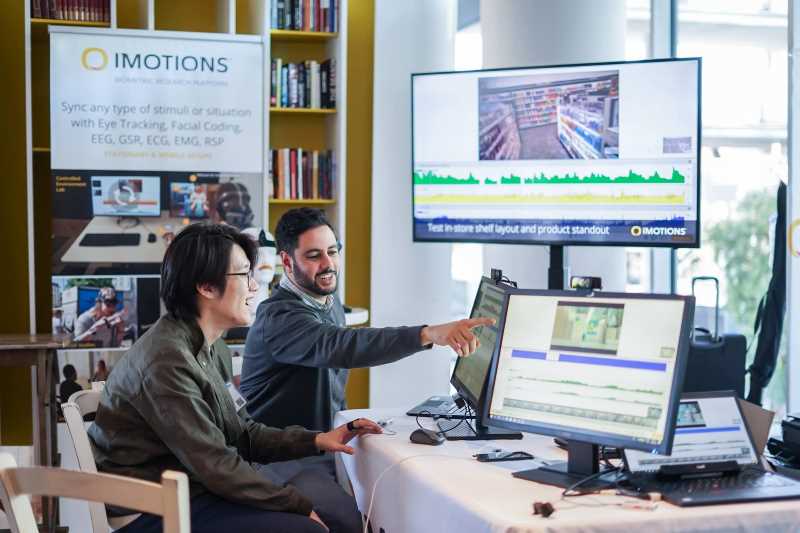We study whether it is possible to infer if a news headline is true or false using only the movement of the human eyes when reading news headlines. Our study with 55 participants who are eye-tracked when reading 108 news headlines (72 true, 36 false) shows that false headlines receive statistically significantly less visual attention than true headlines. We further build an ensemble learner that predicts news headline factuality using only eye-tracking measurements. Our model yields a mean AUC of 0.688 and is better at detecting false than true headlines. Through a model analysis, we find that eye-tracking 25 users when reading 3-6 headlines is sufficient for our ensemble learner.
KEYWORDS
Factuality checking; Eye tracking; Fake news
We used iMotions to calibrate the eye tracker and collect the data. Participants were placed 60cm away from the screen, and the room had soft standard artificial light. No head stabilisation was used (head movements were unconstrained so the intrusion of the eye moving measurement was minimal). We calibrated the eye tracker using a standard 9-point calibration prior to each recording. Participants indicated which of the three headlines per screen was the most recent by typing 1, 2, or 3 on the keyboard (for the position of the top, middle, and respectively bottom headline). Typing was chosen over using the cursor because the cursor could interfere considerably with eye tracking.
Future work includes investigation of eye tracking as a boosting mechanism to potentially improve factuality detection based on text processing, and refining the relationship between eye movements in more typical IR tasks such as search. A different direction of promising future work is to repeat our study “in the wild” outside usual laboratory settings, including eye-tracking methods with lower fidelity, such as for instance typical cameras mounted on laptops and smartphone cameras.











